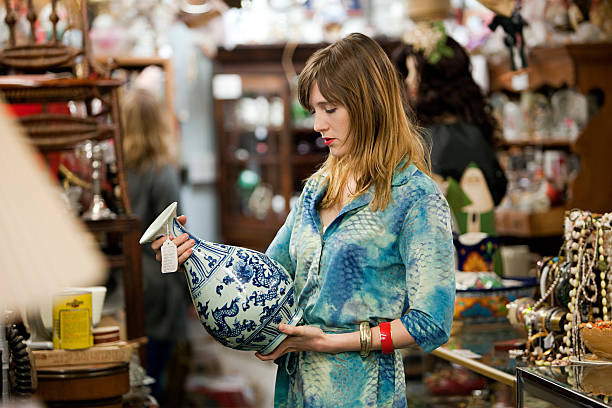 There is so much fun in shopping for antiques. Sometimes, we find the best items from the flea market and in specialized shops. From hand-painted teapots to ornate sofas, these antiques make an excellent addition to your home. An antique shopping guide will help!
There is so much fun in shopping for antiques. Sometimes, we find the best items from the flea market and in specialized shops. From hand-painted teapots to ornate sofas, these antiques make an excellent addition to your home. An antique shopping guide will help!
Be Prepared
The best way to start your shopping trip is to be prepared for moving your antiques from the shop to your home. A simple kit containing items you already have in your house should be ready to go. Your kit should have cardboard boxes (preferably foldable), a blanket or bubble wrap for padding, and wipes for dusty pieces. It’s also helpful to measure the space you want to fit the item into before you go. If your find is too big for your vehicle, have a Plan B to transport it such as a rental van.
Identify the Best Market for Your Needs
Depending on your needs, you should decide which type of market is the best place to find it. If you’re looking for affordable, second-hand items, shop at a flea market. If you want “old” heirlooms, try an antique mall. Genuine antiques are usually found in a shop owned by an antiquities expert.
The terms antique, vintage, or retro are sometimes used interchangeably, but they do have different meanings. These differentiations can help determine the value of the item. The definition of antique is simple–any item that is over 100 years old. This rule applies to anything from books to glassware. Vintage pieces are not sold as antiques. Although determining the age is a bit more subjective, vintage usually means an item that is over 40 years old. People buy vintage items because they are nostalgic decorative pieces or collectibles. Retro items are thought of as existing in the more recent past and are sometimes only slightly used. These items are more than 20 years old, but less than 40.
Antiquing Etiquette
When you enter an antique market or mall, it’s always best to greet the vendor, setting a friendly tone. It is acceptable to haggle or ask for a discount. Some people may feel uncomfortable, but these tips can help you along.
You should also inspect the item carefully for dents, scratches, or chips. If you find a flaw, you should ask for a discount.
Keep the Vision
When shopping for pieces to decorate your home, keep in mind the style you are trying to achieve. Are you going for farmhouse chic, rustic, or something retro? If you are not sure what your style is, start with a major piece that you like that ties the room together and decorate accordingly.
Authenticity
If you are new at this, you probably don’t have experience determining the authenticity of an antique. There are some ways to verify its claim:
- Distinguish sterling silver from plated by its authenticating mark. Look for a marking that says “9.25”, “Sterling”, “Sterling 925”, or “S/S.”
- To check whether a porcelain item is genuine, hold a flashlight (your phone works well for this) up to see if the light shines through. If it does, it’s genuine.
Also, consider the function of the item you’re interested in. A fragile piece should not be in a place where it can be easily damaged.
Additionally, before you make a purchase, you should find out what the return policy is, especially on large valued items. If anything should be wrong, or it just doesn’t fit with your decor, you’d want to know if you can take it back.
Let’s Shop
With an antique shopping gude, you are ready to shop. Get your antiquing kit, cash, and transportation, and go! The Old & New Shop is one of the favorite antique and vintage dealers in the New York metro area.
